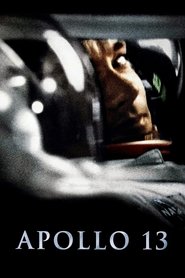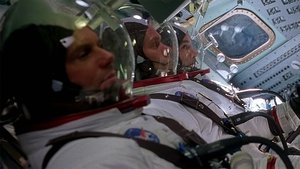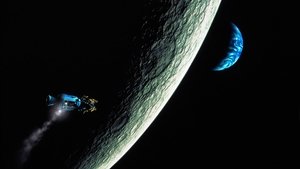
Video Sources 2300 Views
Synopsis
Apollo 13 1995 full Movie Download In English 720p and 480p
StoryLine:
Apollo 13 (April 11–17, 1970) was the seventh crewed mission in the Apollo space program and the third meant to land on the Moon. The craft was launched from Kennedy Space Center on April 11, 1970, but the lunar landing was aborted after an oxygen tank in the service module (SM) failed two days into the mission. The crew instead looped around the Moon and returned safely to Earth on April 17. The mission was commanded by Jim Lovell, with Jack Swigert as command module (CM) pilot and Fred Haise as Lunar Module (LM) pilot. Swigert was a late replacement for Ken Mattingly, who was grounded after exposure to rubella.A routine stir of an oxygen tank ignited damaged wire insulation inside it, causing an explosion that vented the contents of both of the SM’s oxygen tanks to space. Without oxygen, needed for breathing and for generating electric power, the SM’s propulsion and life support systems could not operate. The CM’s systems had to be shut down to conserve its remaining resources for reentry, forcing the crew to transfer to the LM as a lifeboat. With the lunar landing canceled, mission controllers worked to bring the crew home alive.Apollo 13 1995 full Movie Download
Although the LM was designed to support two men on the lunar surface for two days, Mission Control in Houston improvised new procedures so it could support three men for four days. The crew experienced great hardship, caused by limited power, a chilly and wet cabin and a shortage of potable water. There was a critical need to adapt the CM’s cartridges for the carbon dioxide scrubber system to work in the LM; the crew and mission controllers were successful in improvising a solution. The astronauts’ peril briefly renewed public interest in the Apollo program; tens of millions watched the splashdown in the South Pacific Ocean on television
Additional Links:
Original title
Apollo 13
IMDb Rating
7.6 275,103 votes
TMDb Rating
7.4 4,019 votes
Director
Director
Cast
Jim Lovell
Fred Haise
Jack Swigert
Ken Mattingly
Gene Kranz
Marilyn Lovell
Congressman
Deke Slayton
Henry Hurt
Mary Haise















![The Infernal Machine [ORG Hindi]](https://image.tmdb.org/t/p/w185/bSqpOGzaKBdGkBLmcm1JJIVryYy.jpg)




![Anek [HD Print]](https://image.tmdb.org/t/p/w185/fIHF8WrZpoomx0QSVTe74NeYGUD.jpg)






